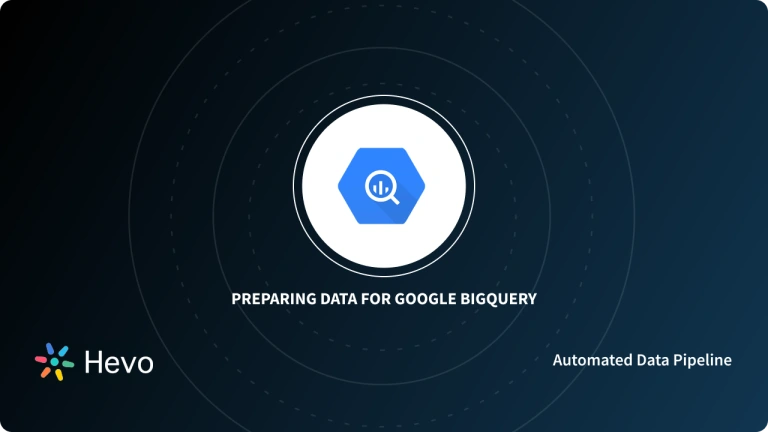Need a better way to handle all that customer and marketing data in HubSpot. Transfer it to BigQuery. Simple! Want to know how?
This article will explain how you can transfer your HubSpot data into Google BigQuery through various means, be it HubSpot’s API or an automated ETL tool like Hevo Data, which does it effectively and efficiently, ensuring the process runs smoothly.
Table of Contents
Use Cases to transfer your data from HubSpot to BigQuery
- Moving HubSpot data to BigQuery creates a single source of truth that aggregates information to deliver accurate analysis. Therefore, you can promptly understand customers’ behavior and improve your decision-making concerning business operations.
- BigQuery can manage huge amounts of data with ease. If there is a need for your business expansion and the production of data increases, BigQuery will be there, making it easy for you.
- BigQuery, built on Google Cloud, has robust security features like auditing, access controls, and data encryption. User data is kept securely and compliant with the rules, thus making it safe for you.
- BigQuery’s flexible pricing model can lead to major cost savings compared to having an on-premise data warehouse that you pay to maintain.
Prerequisites
When moving your HubSpot data to BigQuery manually, make sure you have the following set up:
- An account with billing enabled on Google Cloud Platform.
- Admin access to a HubSpot account.
- You have the Google Cloud CLI installed.
- Connect your Google Cloud project to the Google Cloud SDK.
- Activate the Google Cloud BigQuery API.
- Make sure you have BigQuery Admin permissions before loading data into BigQuery.
These steps ensure you’re all set for a smooth data migration process!
Easily transfer your HubSpot data to BigQuery with Hevo’s intuitive platform. Our no-code solution makes data integration and migration seamless and efficient.
Why choose Hevo?
- Auto-Schema Mapping: Automatically handle schema mapping for a smooth data transfer.
- Flexible Transformations: Utilize drag-and-drop tools or custom Python scripts to prepare your data.
- Real-Time Sync: Ensure your BigQuery warehouse is always up-to-date with real-time data ingestion.
Join over 2000 satisfied customers, including companies like FairMoney and Pelago, who trust Hevo for their data integration needs. Check out why Hevo is rated 4.7 stars on Capterra.
Get Started with Hevo for FreeMethods to move data from HubSpot to BigQuery
Method 1: The Best Way of Loading Data from HubSpot to BigQuery: Using Hevo Data
You can easily opt for SaaS alternatives such as Hevo Data to avoid the hassle of going through the manual setup. You can configure Hevo Data to transfer your data from HubSpot BigQuery integration in three easy steps.
Step 1: Set up HubSpot as a Source Connector
- To connect your HubSpot account as a source in Hevo, search for HubSpot.
- Configure your HubSpot Source.
- Give your pipeline a name, configure your HubSpot API Version, and mention how much Historical Sync Duration you want, such as for the past three months, six months, etc. You can also choose to load all of your Historical data.
For example, I will select three months and then click on Continue.
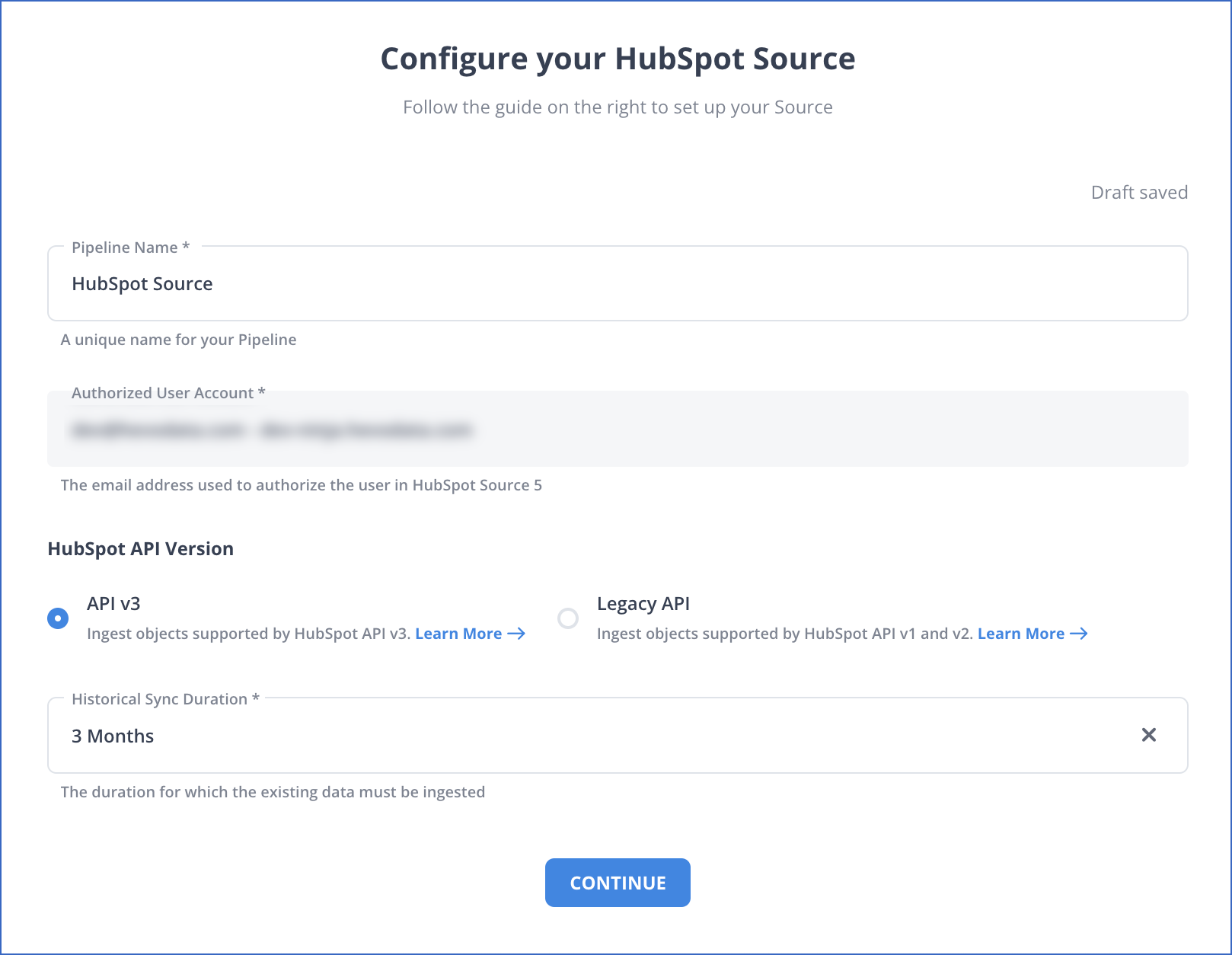
Step 2: Set up BigQuery as a Destination Connector
- Select BigQuery as your destination.
- Configure your destination by giving a Destination Name, selecting your type of account, i.e., User Account or Service Account, and mentioning your Project ID. Then click on Save & Continue.
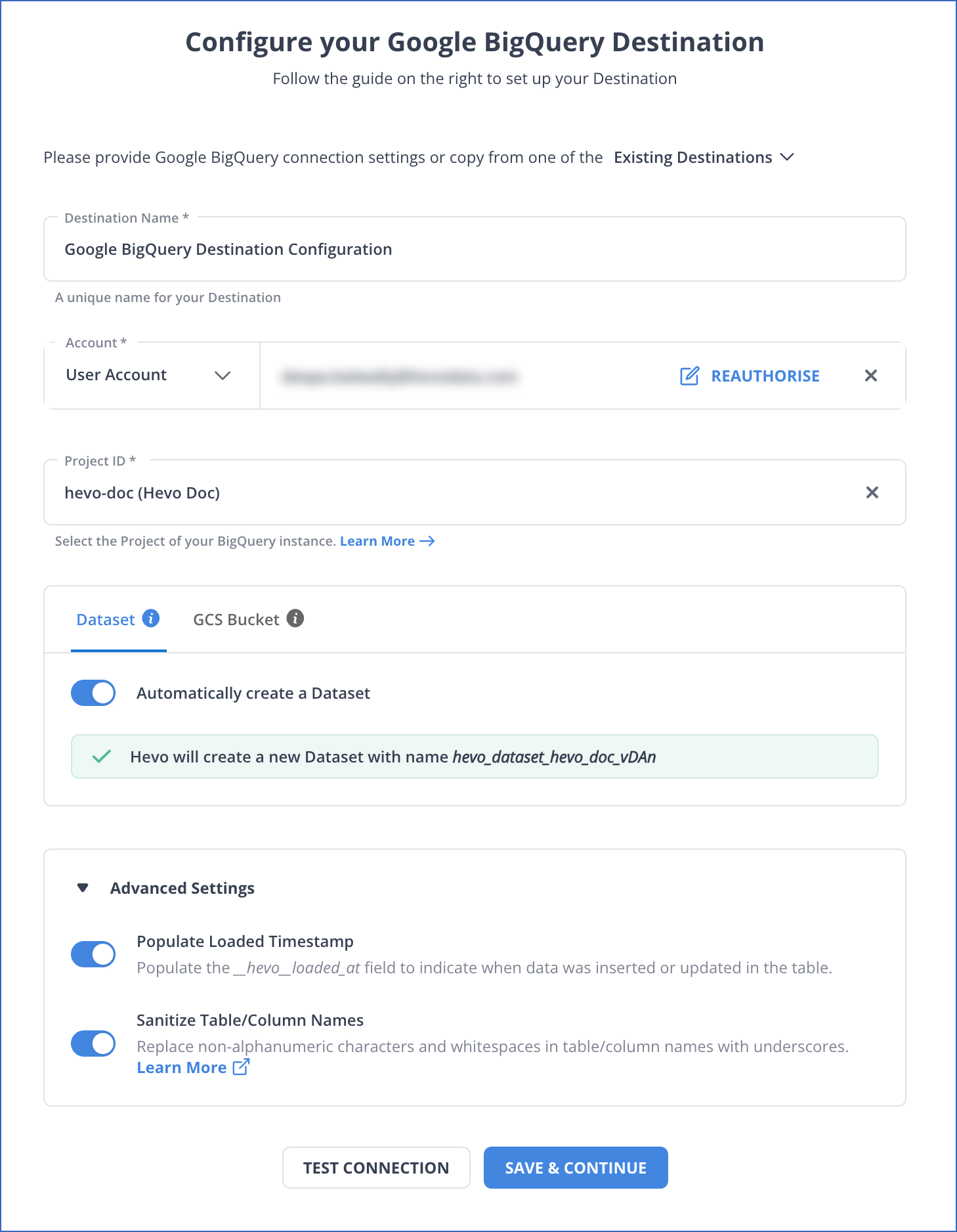
NOTE: As the last step, you can add a Destination Table Prefix, which will be reflected in your destination. For example, if you put ‘hs,’ all the tables loaded into your BigQuery from HubSpot will have ‘hs_original-table-name.’ If you have JSON files, manually flattening your files is a tedious process; thus, Hevo Data provides you with two options: JSON fields as JSON strings and array fields to strings, while the other is collapsing nested arrays into strings. You can select either one of those and click on Continue.
Once you’re done, your HubSpot data will be loaded into Google BigQuery.
Step 3: Sync your HubSpot Data to BigQuery
In the pipeline lifecycle, you can observe your source being connected, data being ingested, prepared for loading into BigQuery, and finally, the actual loading of your HubSpot data.
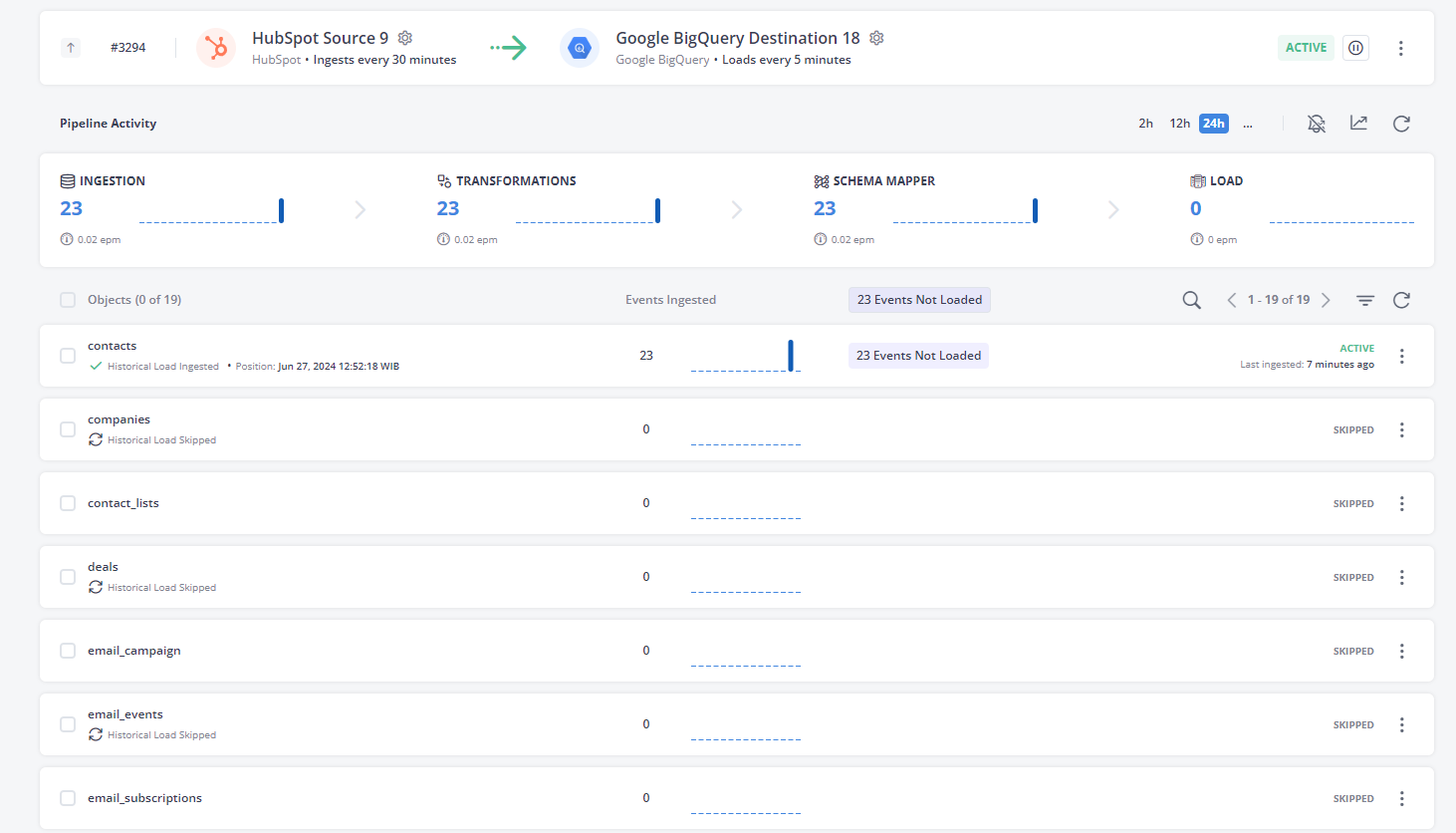
As you can see above, our HubSpot has now been connected to BigQuery. Once all events have loaded, your final page will resemble this.
Method 2: How to move data from HubSpot to BigQuery Using HubSpot Private App
Step 1: Creating a Private App
Go to the Settings of your HubSpot account and select Integrations → Private Apps. Click on Create a Private App.
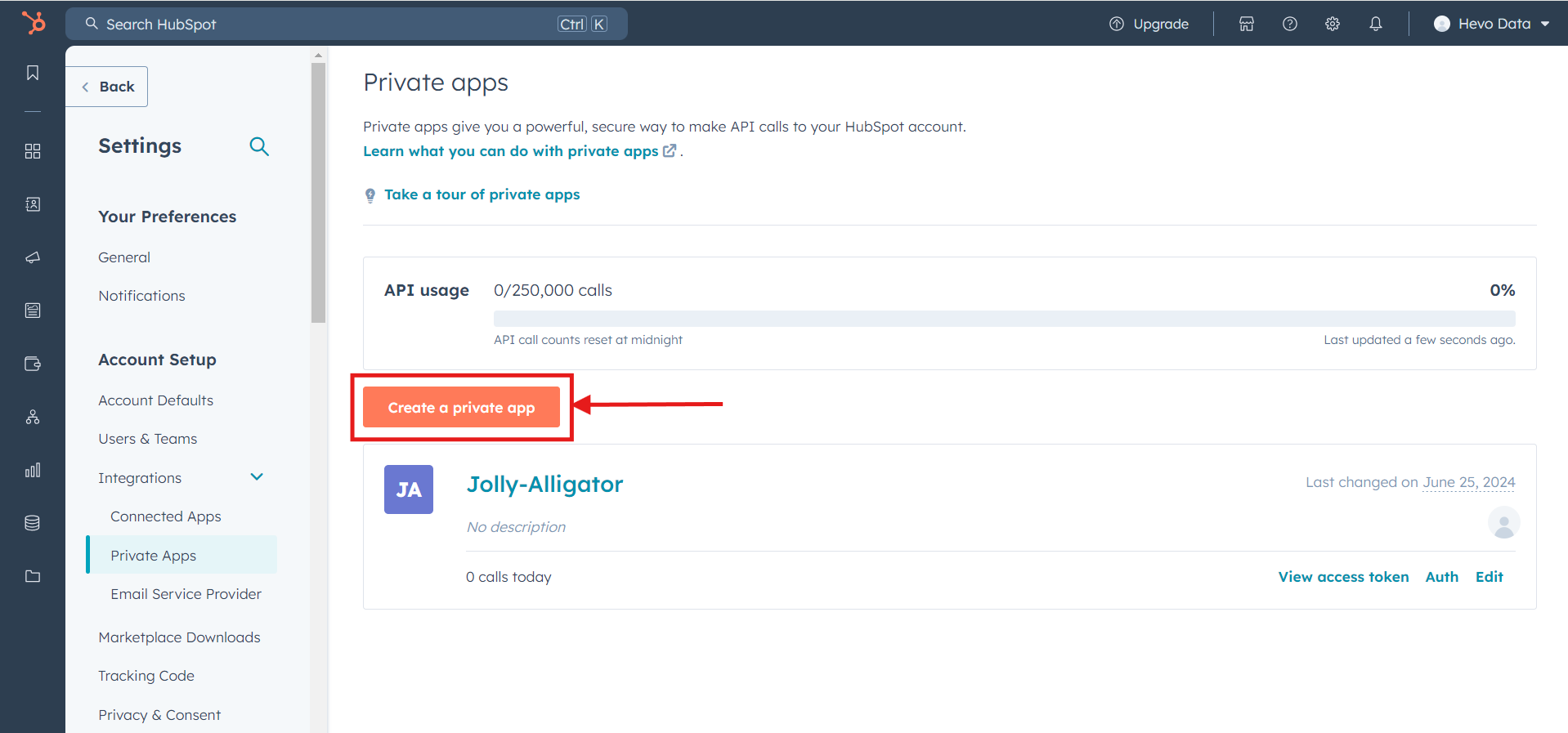
On the Basic Info page, enter your app name or generate a random one, and upload a logo by hovering over the placeholder (or use the initials of your app name as the default logo). You can also provide a description for your app, though leaving it blank is an option; however, a relevant description is recommended.
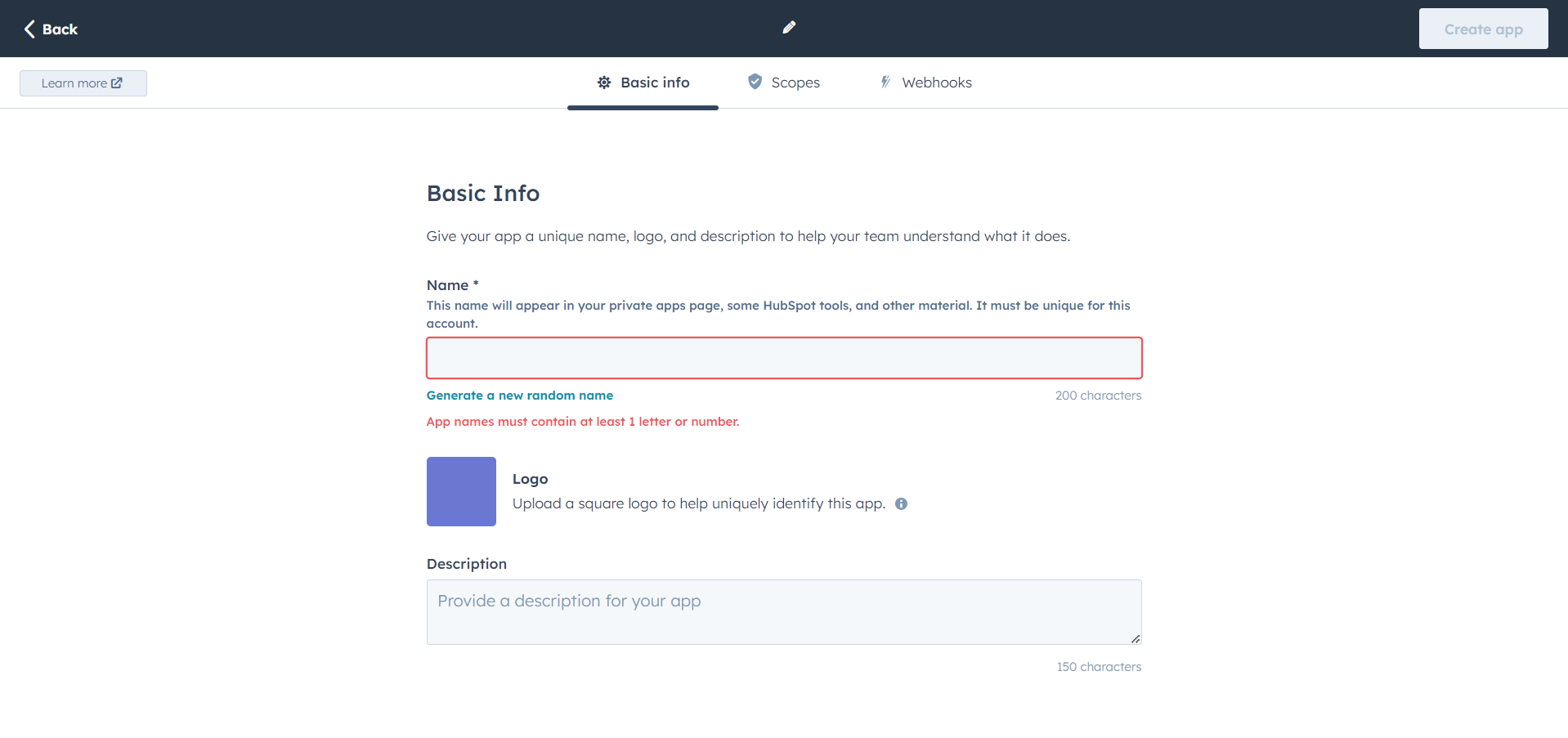
Click on the Scopes tab next to the Basic Info button to configure permissions for Read, Write, or both. For example, if you only want to transfer contact information from your HubSpot data into BigQuery, select only the Read configuration, as shown in the attached screenshot.
Note: If you access some sensitive data, it will also showcase a warning message, as shown below.
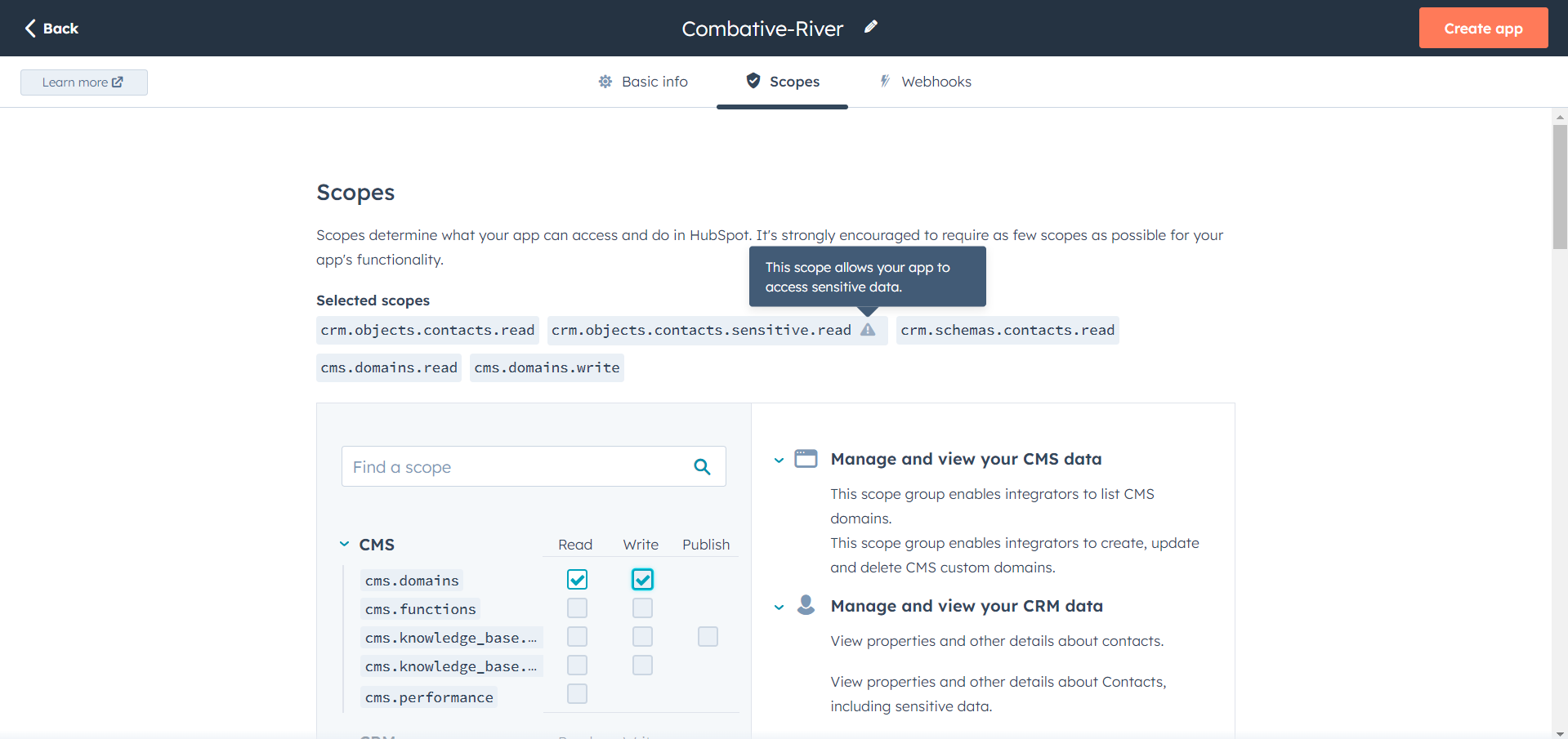
Once you have configured your permissions, click the Create App button at the top right.
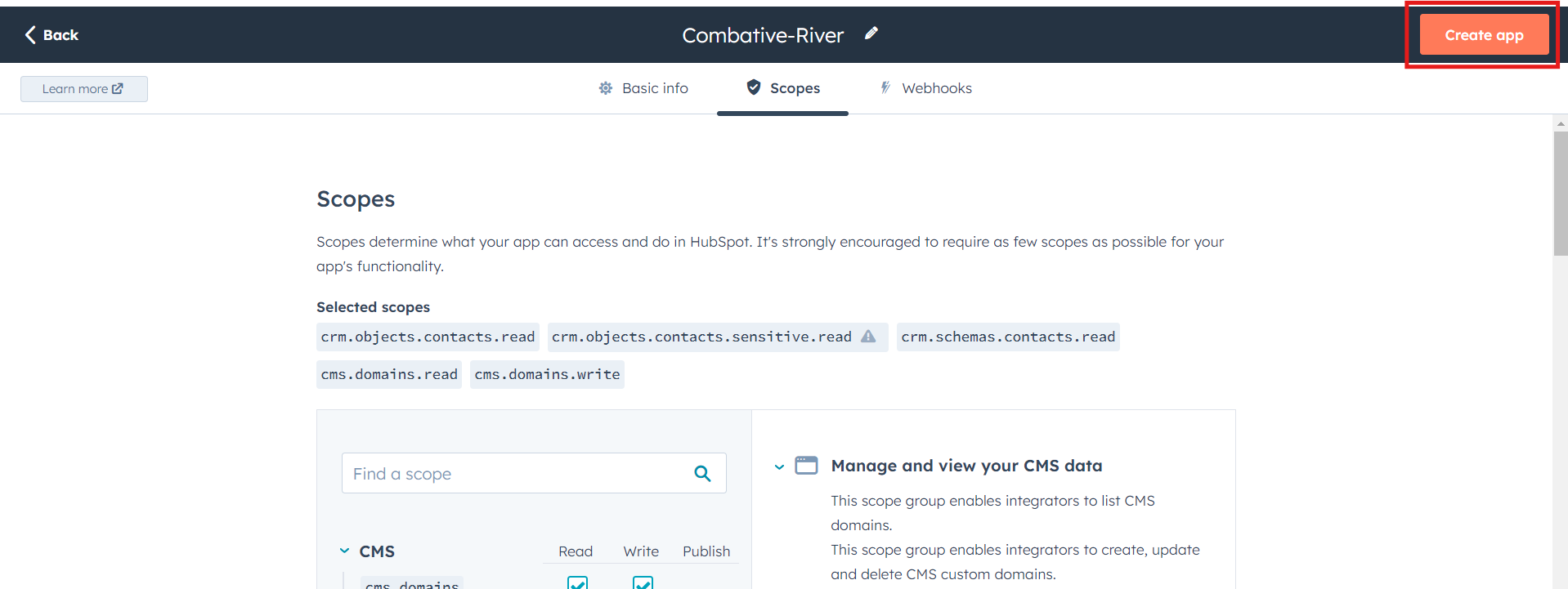
After selecting the Continue Creating button, a prompt screen with your Access token will appear.
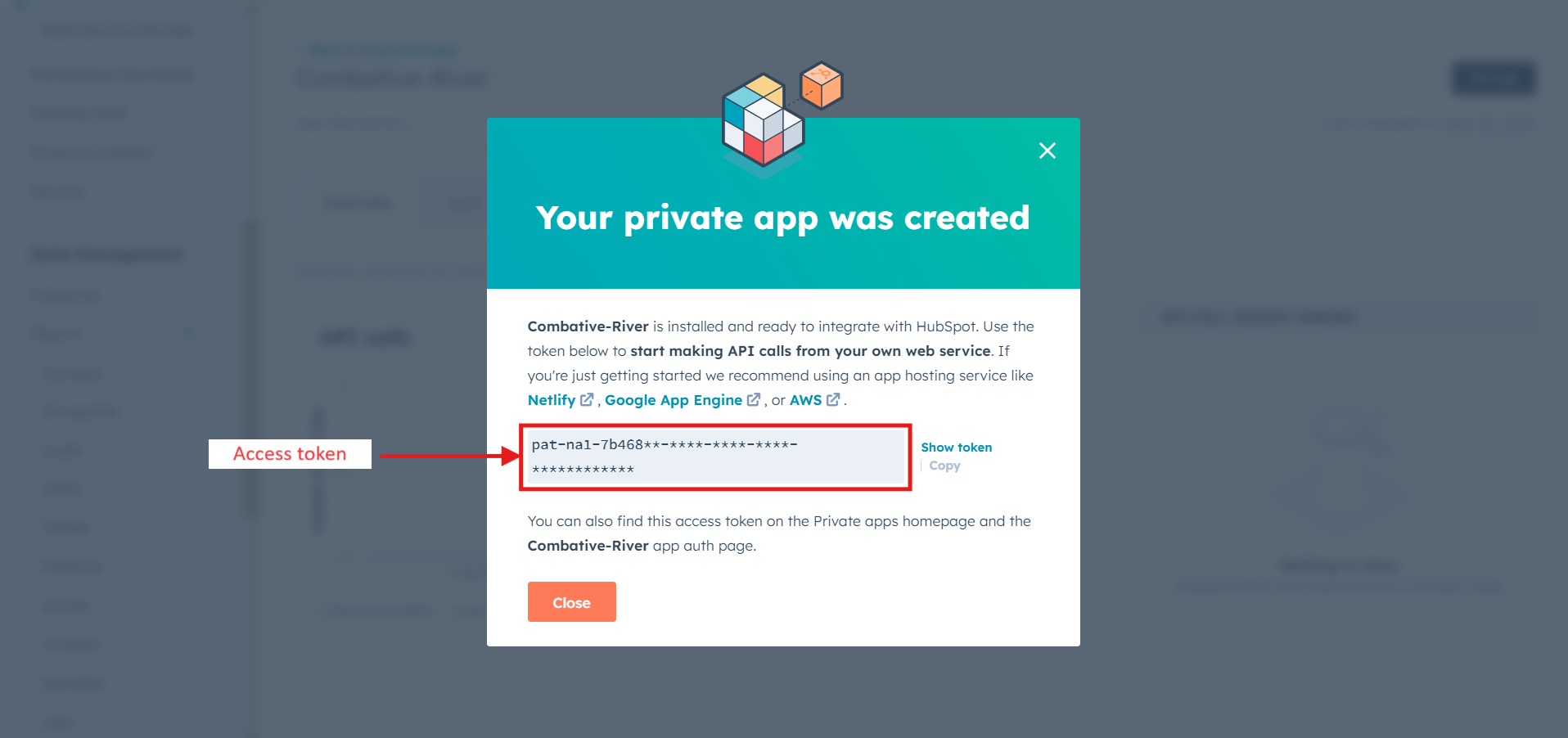
Once you click on Show Token, you can copy your token.
Note: Keep your access token handy; we will require that for the next step. Your Client Secret is not needed.
Step 2: Making API Calls with your Access Token
Use curl or Axios (Node.js) to call:
https://api.hubapi.com/crm/v3/objects/contactsAdd headers:Authorization: Bearer YOUR_TOKENContent-Type: application/json
Step 3: Create a BigQuery Dataset
From your Google Cloud command line, run this command:
bq mk hubspot_datasethubspot_dataset is just a name that I have chosen. You can change it accordingly. The changes will automatically be reflected in your Google Cloud console. Also, a message “Dataset ‘united-axle-389521:hubspot_dataset’ successfully created.” will be displayed in your CLI.
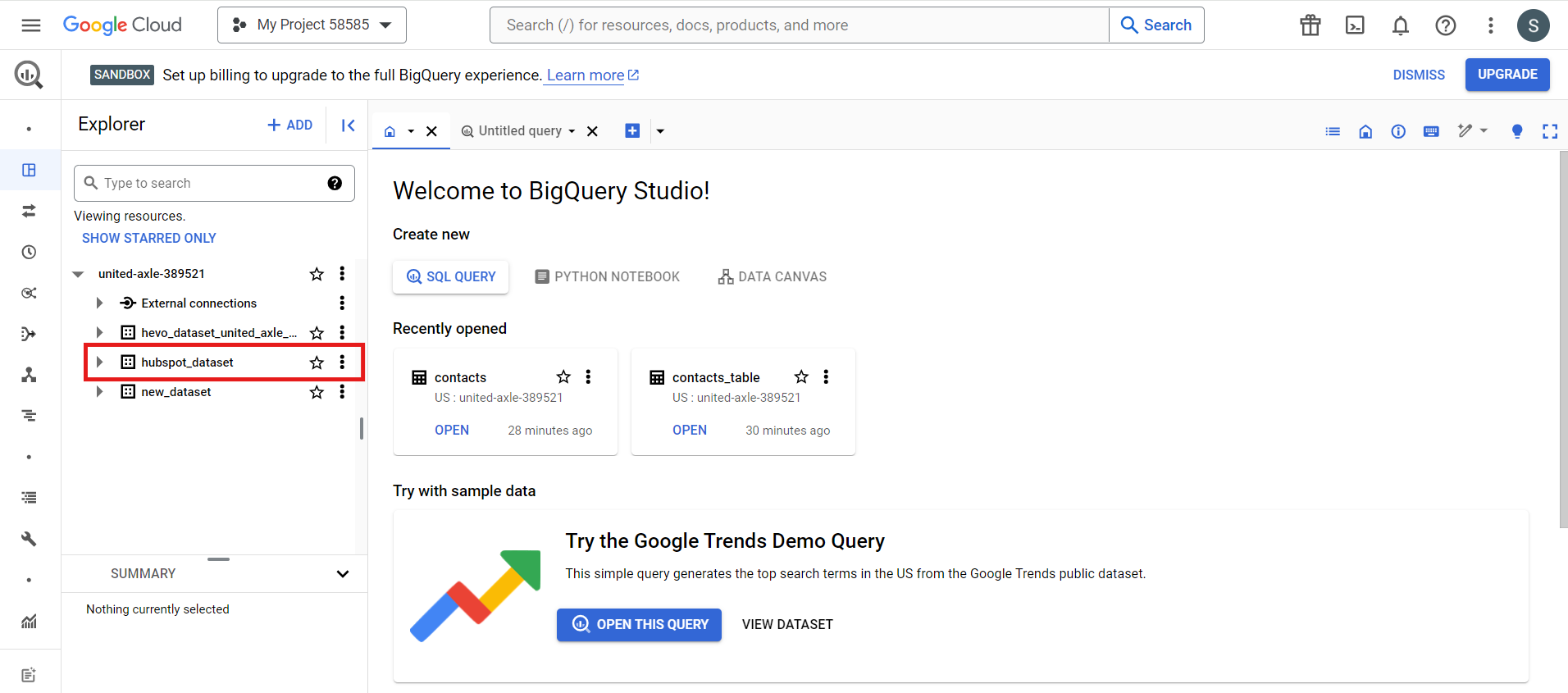
NOTE: Instead of using the Google command line, you can also create a dataset from the console. Just hover over View Actions on your project ID. Once you click it, you will see a Create Dataset option.
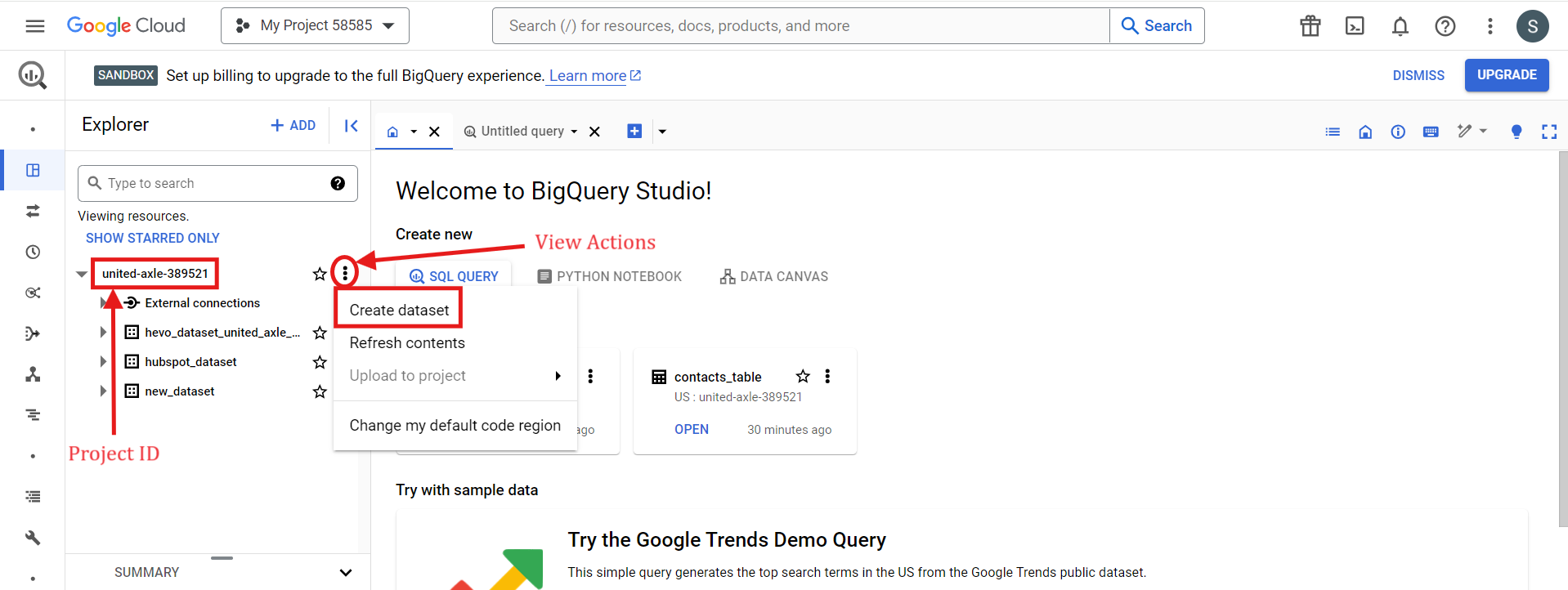
Step 4: Create an Empty Table
Run the following command in your Google CLI:
bq mk
--table
--expiration 86400
--description "Contacts table"
--label organization:development
hubspot_dataset.contacts_tableAfter your table is successfully created, a message “Table ‘united-axle-389521:hubspot_dataset.contacts_table’ successfully created” will be displayed. The changes will also be reflected in the cloud console.
NOTE: Alternatively, you can create a table from your BigQuery Console. Once your dataset has been created, click on View Actions and select Create Table.
Step 5: Adding Data to your Empty Table
Convert HubSpot response (e.g., JSON) into newline-delimited JSON. Define schema in contacts_schema.json. Load using:
bq load \
--source_format=NEWLINE_DELIMITED_JSON \
hubspot_dataset.contacts_table \
./contacts_data.json \
./contacts_schema.jsonSee the documentation’s “DataTypes” and “Introduction to loading data” pages for more details.
Step 6: Scheduling Recurring Load Jobs
First, create a directory for your scripts and an empty backup script:
$ sudo mkdir /bin/scripts/ && touch /bin/scripts/backup.shNext, add the following content to the backup.sh file and save it:
#!/bin/bash
bq load --autodetect --replace --source_format=NEWLINE_DELIMITED_JSON hubspot_dataset.contacts_table ./contacts_data.jsonLet’s edit the crontab to schedule this script. From your CLI, run:
$ crontab -eYou’ll be prompted to edit a file where you can schedule tasks. Add this line to schedule the job to run at 6 PM daily:
0 18 * * * /bin/scripts/backup.shFinally, navigate to the directory where your backup.sh file is located and make it executable:
$ chmod +x /bin/scripts/backup.shAnd there you go! These steps ensure that cron runs your backup.sh script daily at 6 PM, keeping your data in BigQuery up-to-date.
Limitations of the Manual Method to Move Data from HubSpot to BigQuery
- HubSpot APIs have a rate limit of 250,000 daily calls that reset every midnight.
- You can’t use wildcards, so you must load each file individually.
- CronJobs won’t alert you if something goes wrong.
- You need to set up separate schemas for each API endpoint in BigQuery.
- Not ideal for real-time data needs.
- Extra code is needed for data cleaning and transformation.
Conclusion
HubSpot is a key part of many businesses’ tech stack, enhancing customer relationships and communication strategies; your business growth potential skyrockets when you combine HubSpot data with other sources. Moving your data lets you enjoy a single source of truth, which can significantly boost your business growth.
We’ve discussed two methods to move data. The first is the manual process, which requires a lot of configuration and effort. Instead, try Hevo Data, it does all the heavy lifting for you with a simple, intuitive process. Hevo Data helps you integrate data from multiple sources like HubSpot and load it into BigQuery for real-time analysis. It’s user-friendly, reliable, and secure, and makes data transfer hassle-free.
Sign up for a 14-day free trial with Hevo and connect Hubspot to BigQuery in minutes. Also, check out Hevo’s unbeatable pricing or get a custom quote for your requirements.
FAQs
Q1. How often can I sync my HubSpot data with BigQuery?
You can sync your HubSpot data with BigQuery as often as needed. With tools such as Hevo Data, you can set up a real-time process to keep your data up-to-date.
Q2. What are the costs associated with this integration?
The costs for integrating HubSpot with BigQuery depend on the tool you use and the amount of data you’re transferring. Hevo Data offers a flexible pricing model. Our prices can help you better understand. BigQuery costs are based on the amount of data stored and processed.
Q3. How secure is the data transfer process?
The data transfer process is highly secure. Hevo Data ensures data security with its fault-tolerant architecture, access controls, data encryption, and compliance with industry standards, ensuring your data is always protected throughout the transfer.
Q4. What support options are available if I encounter issues?
Hevo Data offers extensive support options, including detailed documentation, a dedicated support team through our Chat support available 24×5, and community forums. If you run into any issues, you can easily reach out for assistance to ensure a smooth data integration process.






